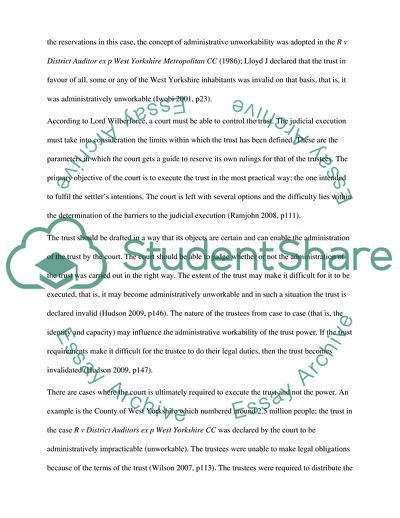Administrative Unworkability in Trusts Essay Example | Topics and Well Written Essays - 1000 words. https://studentshare.org/finance-accounting/1748193-critically-examine-the-concept-of-administrative-unworkability-in-trusts
Administrative Unworkability in Trusts Essay Example | Topics and Well Written Essays - 1000 Words. https://studentshare.org/finance-accounting/1748193-critically-examine-the-concept-of-administrative-unworkability-in-trusts.


